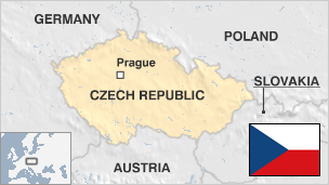
Facts and stats about Czech Republic
The Czech Republic is a landlocked country in Central Eastern Europe with Prague as its capital. Just like many countries in the continent, Czech Republic is rich in history.
Early in the 9th century, the nation was dominated by the Moravian Empire. In fact, the Czech Republic currently lies on many territories of what was once Bohemia and Morovia. With the fall of the Morovians, the small state was formally annexed and became a part of the Holy Roman Empire. At this time, the dukes of the state expanded the territory to the greatest extent. However, wars that plagued Europe early in its history took its toll on the small state, although it did not stop the country from gaining affluence. By the start of the First World War, half of the country was one of the great industrial centers of Europe.
After the World War I, the Czechs and Slovaks merged and formed the unified Czechoslovakia. At the end of the Second World War, the country fell under the Soviet sphere of influence; attributed to its disillusionment of the West’s failure to come to their aid (it was the USSR’s Red Army which liberated the country). Communism, however, did not fare well with many of the country’s citizens, and dissent, along with demands for democratization, grew rapidly. This led to the momentary occupation of the Warsaw Pact forces on major population centers of Czechoslovakia and ushered in ‘Normalization,’ a period of abuse and repression.
In 1989, the peaceful Velvet Revolution threw out the communist government and established the democracy in the country. However, unsolvable differences between the Czechs and Slovaks led to the split of the country to two autonomous nations: Czech Republic and the Republic of Slovakia.
Today, the Czech Republic is the very first Comecon (communist countries under Soviet control) to achieve the status of a developed country. It has one of the highest Human Development Index in the world, and is the 14th most peaceful country as of 2013.
- Agriculture 157
- Background 16
- Conflict 5
- Cost of living 55
- Crime 119
- Culture 31
- Disasters 24
- Economy 3029
- Education 459
- Energy 1739
- Environment 259
- Geography 85
- Government 229
- Health 349
10.16 million
Population. Ranked 86th in 2013.
$18,607.71
GDP per capita. Ranked 37th in 2012.

77,250 sq km
Sq. km. Ranked 111th in 2008.